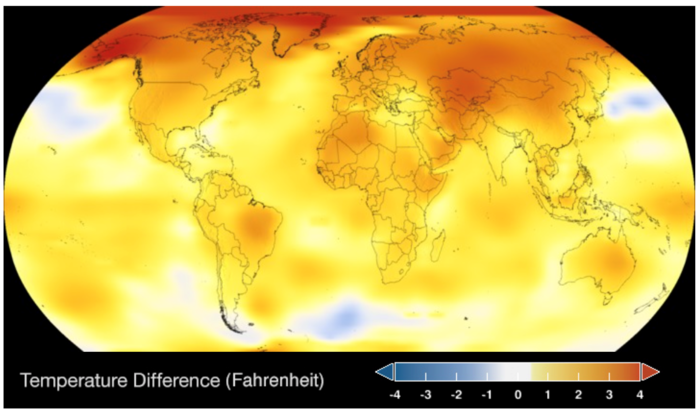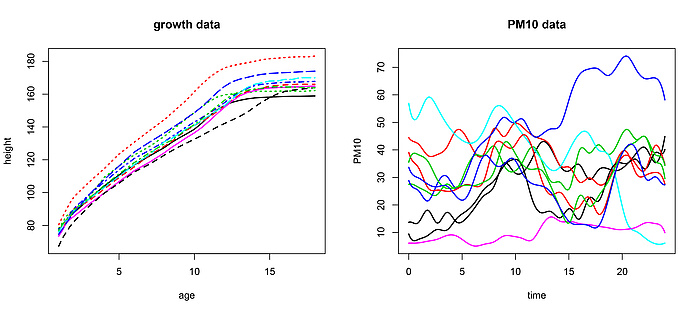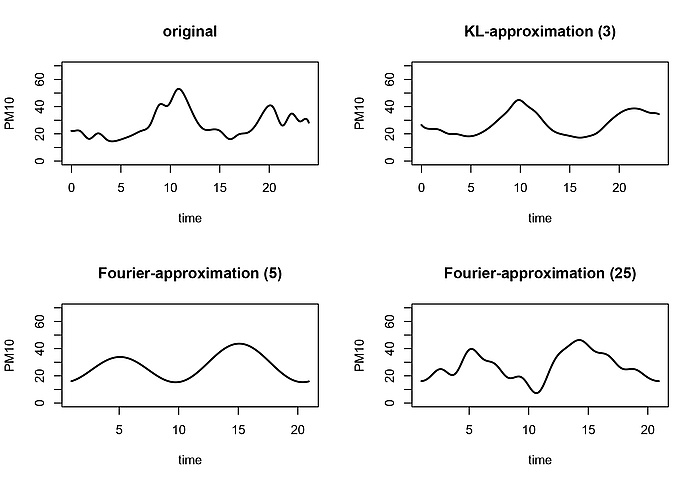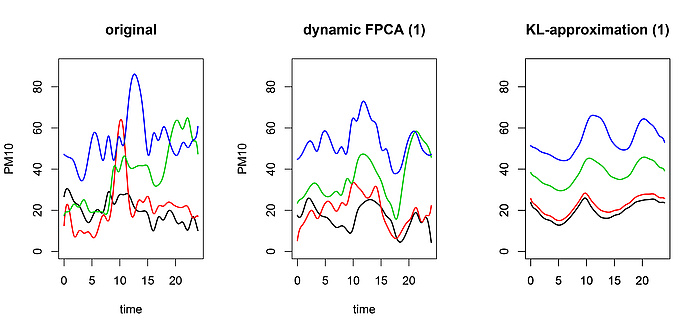Efficient Dimension Reduction using Dynamic Functional Principal Components

Growth curves and PM10
To clarify ideas, let us look at two simple FDA examples. In the first, we consider growth curves of 10 children at the age of 0¬18 years and in the second, we look at daily PM10 pollution level curves in Graz (Figure 2). In each curve we can check for many abstract features that may have practical or scientific relevance: e.g. the average level, the maximum, a potential trend or the position and number of peaks are important features in an environmental study on PM10 levels.

Tackling high dimension
In mathematical terms the curves that we investigate are realizations of a stochastic process. The fact that these random curves contain many features means that they constitute intrinsically high (in theory infinite) dimensional mathematical objects. From a practical as well as from a theoretical point of view, one is interested to reduce the dimensionality of the problem and to retain for a further analysis only those features in our observations which best describe the curves. A key statistical tool to tackle the dimensionality of functional data is the so-called functional principal component analysis. Functional principal components are orthogonal basis functions and as such we can use them to represent our functional observations as a superposition of these curves. This representation is called Karhunen-Loève (KL) expansion and its theoretical foundations date back to the early 20th century. Back then this approach was numerically unfeasible and hence it was not targeted for statistical applications. By expanding along a small number of basis-functions we obtain a low dimensional representation of the curve. The reader familiar with Fourier series may compare this to the Fourier expansion, where a curve is represented as a superposition of sinusoidal functions. The advantage of functional principal components is that, in some sense, they optimally adapt to the data. In Figure 3 we illustrate the approximation of a PM10 curve with 3 principal components and 5 and 25 Fourier basis functions, respectively.
Incorporating serial correlation
When looking at the PM10 and growth curve data, we observe several fundamental differences. For example, in contrast to PM10 data, the growth curves are monotone and smooth. Another important difference is that the growth data are statistically independent – there is no reason why the growth curve of one child should impact the growth curve of another child. This, however, is no longer true for the PM10 data. Not surprisingly, there is strong correlation between the PM10 loads on consecutive days. This problem is very common in FDA. It is related to the fact that many functional data are sampled sequentially in time (e.g. when data are obtained by segmenting a continuous process into natural units, such as daily data) which then often yields dependences. In one of my recent research projects I showed with my collaborators that the dependence between functional data can be used in order to obtain much more efficient dimension reduction than with common functional PCA. Our method is called dynamic functional principal component analysis.
Kontakt
Univ.-Prof. Mag.rer.nat. Dr.rer.nat.
Institute of Statistics
Kopernikusgasse 24/III
8010 Graz
Phone: +43 316 873 6476
<link int-link-mail window for sending>shoermann@tugraz.at



